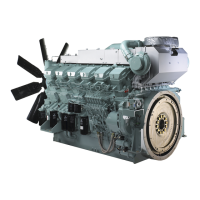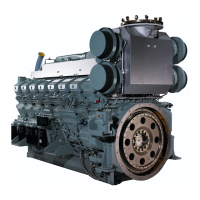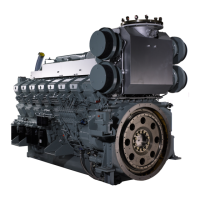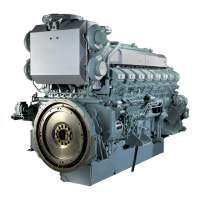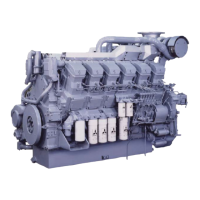1-8
Chapter 1 BASIC SAFETY PRECAUTIONS
Other Cautions
Never Modify Engine
Unauthorized modification of the engine will void your
warranty.
Modification of the engine may not only cause dam-
age to the engine but also may result in personal
injury.
If you have to modify the engine, please contact your
local dealer.
Observe Safety Rules at Work
Site
Observe the safety rules established at your work-
place.
Do not operate the engine if you are not feeling well,
and inform your supervisor of your condition. Opera-
tion of the engine with reduced awareness may cause
improper operation that could result in accidents.
When working in a team for two or more people, use
specified hand signals to communicate among work-
ers.
Wear Clothing and Protective
Gear
Wear a hardhat, face shield, safety shoes, dust mask,
gloves, ear plugs and other protective gear as
needed. When handling compressed air, wear safety
goggles, a hardhat, gloves and other necessary pro-
tective gear. Working without wearing proper protec-
tive gear could result in serious injuries.
Never Break Seals
To ensure proper engine operation, the fuel control
links are sealed to prevent accidental change of the
injection volume and rotation speed settings. Remov-
ing these seals of the engine set will void the war-
ranty. The following problems may occur if these seals
are removed.
Rapid wear of sliding and rotating parts.
Failure due to seizure or damage of parts.
Considerably increased consumption of fuel and lu-
bricating oil.
Degradation of performance due to improper balance
between fuel injection volume and governor operation
or overrunning, which could result in a serious acci-
dent.
Perform All Specified Pre-oper-
ation Inspections and Periodic
Inspections
Conduct pre-operation inspections and periodic
inspections as described in this manual.
Failure to conduct specified inspections may cause
various engine problems and damage to parts, which
may result in serious accidents.
Break-in Engine
For the first 50 hours of a new or overhauled engine,
operate the engine under a light load for break-in
operation.
Operating new engines or overhauled engines in a
severe condition during the break-in period shortens
the service life of the engine.
Warm-up Engine Before Use
After starting the engine, run the engine at a low idling
speed until the coolant temperature become approx
50°C [122°F]. Start the actual work after this operation
is completed. Warm-up operation circulates the lubri-
cant through the engine, and thereby, individual
engine parts are well lubricated before they are sub-
jected to heavy loads.
Warm-up operation circulates lubricant oil through the
engine and contributes to a longer service life and
economical operation.
However, do not perform the warm-up operation for
longer than necessary. Prolonged warm-up operation
causes carbon build-up in the cylinders that leads to
incomplete combustion.
Conduct Cooling Operation
Before Stopping the Engine
Before stopping the engine, operate the engine at low
idling speed for 5 to 6 minutes to cool down.
Stopping the engine immediately after high-load oper-
ation will cause engine parts to heat up and shorten
the service life of the engine.
During cooling operation, check the engine for abnor-
malities.
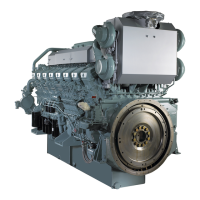
